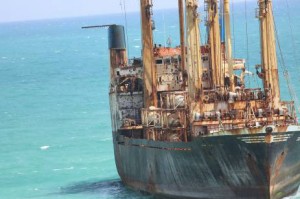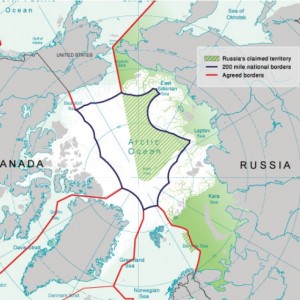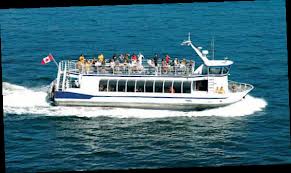
Despite having declared a ‘comprehensive approach’ to Somalia, linking security with development, and launching the EUNAVFOR mission in December 2008, the European Union (EU) has neglected an important piece of the counter-piracy solution: negotiations for the release of European hostages held by pirates. The EU should adopt a consistent EU policy concerning the payment of ransom to pirates, set up an EU negotiation team, and identify and promulgate specific best practices in negotiation strategies.
The reduction of piracy in the Gulf of Aden is the consequence of many actions undertaken by several actors. The previous Force Commander of EUNAVFOR, Rear Admiral Philippe Coindreau, declared the “results are due to the combination of EUNAVFOR’s action, […] the use, by the maritime community, of systematic security measures on merchant vessels and high-quality cooperation with other naval forces and independent Navies”. According to Xavier Larreur, a NATO official, this is also partly due to Puntland’s efforts in arresting pirates.
However, while piracy in the Indian Ocean is on the wane, it is not yet beaten. The International Maritime Bureau (IMB) states that five boats and 77 hostages are still held by Somali pirates. In the beginning of June, a failed attack on the Indian ship Shaahi al Nuuri in the Indian Ocean led the head of operation of the EU Naval Force, Rear Admiral Bob Tarrant, to declare: “This latest attack once again shows that the threat of piracy is real. We must all remain vigilant. Earlier in the week – according to our information – several “suspicious approaches” in the Gulf of Aden were reported, but without shooting or boarding attempts.”Attacks will rise again if the naval presence is reduced or if vessels relax their vigilance.
Somali pirates are clearly organized: “Everything that you would need to run a cruise ship line, short of the entertainment, you need to run a piracy operation” says J. Peter Pham from James Madison University in Virginia. A pirate attack can cost as little as $15,000 dollars to set up and only 15 to 30 minutes to execute. But waiting for the ransom can last months.
Negotiations are the solution of last resort, taken only when preventive measures have failed to protect the ships from hijacking. Once hijacked, ransom should be paid only if it is too risky for the naval forces to attack the hijacked ship. This is typically the case, as most ships taken hostage by pirates are released by ransom rather than force, the actors involved preferring to avoid rescue missions because of the high risk of casualties. Fortunately, as pirates are not terrorists, there is not as strong a prohibition of negotiating with them for the release of hostages.
However, this solution of last resort can’t be handled individually. To avoid an increase in the amount of ransom and violence against hostages, it is necessary that Europeans better organize and coordinate the conduct of negotiations with pirates. The EU needs to create a crisis management team to provide a coordinated response to every ransom demand. By knowing how high the ransom was for each category of ship, and by understanding pirates’ negotiations styles, the EU could try to keep the price down. Indeed, countries that easily pay ransom such as Greece and Italy are paying sky-rocketing amounts. Pirates have now been securing equal or greater value for previously less-hijacked vessels. Therefore, a coordinated response could help reduce the business of piracy, or at least to not make it so attractive that new pirates get on the market, by setting a standard cap on the payment of ransoms.
A standing crisis management team would also gather and share intelligence on pirate groups to better fight them and facilitate any negotiations. Social networks, widely used by pirates, would improve knowledge of individuals and groups operating in the area. The EU’s effort must be modern – not left behind because of a heavy bureaucratic structure. Once hostages are freed, the crisis management team could systematically collect additional information on the organization of these criminal networks, working with EUROPOL and INTERPOL, who already trace criminal financial flows arising from payment of ransom.
This model can also be applied to other areas of pirate activity. The IMB again reports that the number of acts of piracy recorded off the West African coast in 2012 exceeded for the first time the attacks in the Gulf of Aden and the Indian Ocean, with 966 sailors attacked in the Gulf of Guinea, against 851 sailors off the coast of Somalia. The cost of goods stolen by West African pirates is estimated at between $34-101 million. On June 24th, the heads of state of Central and West African nations, gathered in Yaounde, Cameroon, for a summit on security in the Gulf of Guinea, requesting the deployment of an international naval force to fight piracy off their coasts.
Negotiations won’t work in every instance and they should not last long. Lengthier negotiations have not proven more successful in reducing the amount of the ransom, and their impact on the mental and physical health of hostages can be significant. In the case of the M/V Iceberg, the crew was abandoned by the owners, who did not have the requisite shipping insurance to pay a ransom. The crew was kept hostage and tortured for three years, which is the longest pirate hijacking in modern maritime history. Another tragic hijacking was the one of the Beluga Nomination, in which a sailor was killed during a failed bid to free the ship. It should be standard EU policy at some early point for the crisis team to determine whether the risk to the mariners of continued negotiations and unliklihood of an acceptable deal outweighs the risk of a rescue attempt. There is no certainty an EU crisis management team would have prevented these tragedies, but the lives of these sailors and the potential to reduce both the human and economic costs is worth it.
Alix is a political advisor in New Caledonia. She previously served as an officer in the French Navy, specialising in maritime law and maritime threats such as overfishing and piracy. Her masters thesis details the fight of the European Union against piracy.
To learn more about this subject, she suggests reading:
http://www.bruxelles2.eu/wp-content/uploads/2012/05/WILLEMEZ-A-little-guide-to-negotiations-with-Somali-pirates-for-European-negotiators-.pdf
http://www.chathamhouse.org/sites/default/files/public/Research/Africa/0812anyimadu_0.pdf
http://www.diw.de/documents/publikationen/73/diw_01.c.408689.de/diw_econsec0074.pdf




